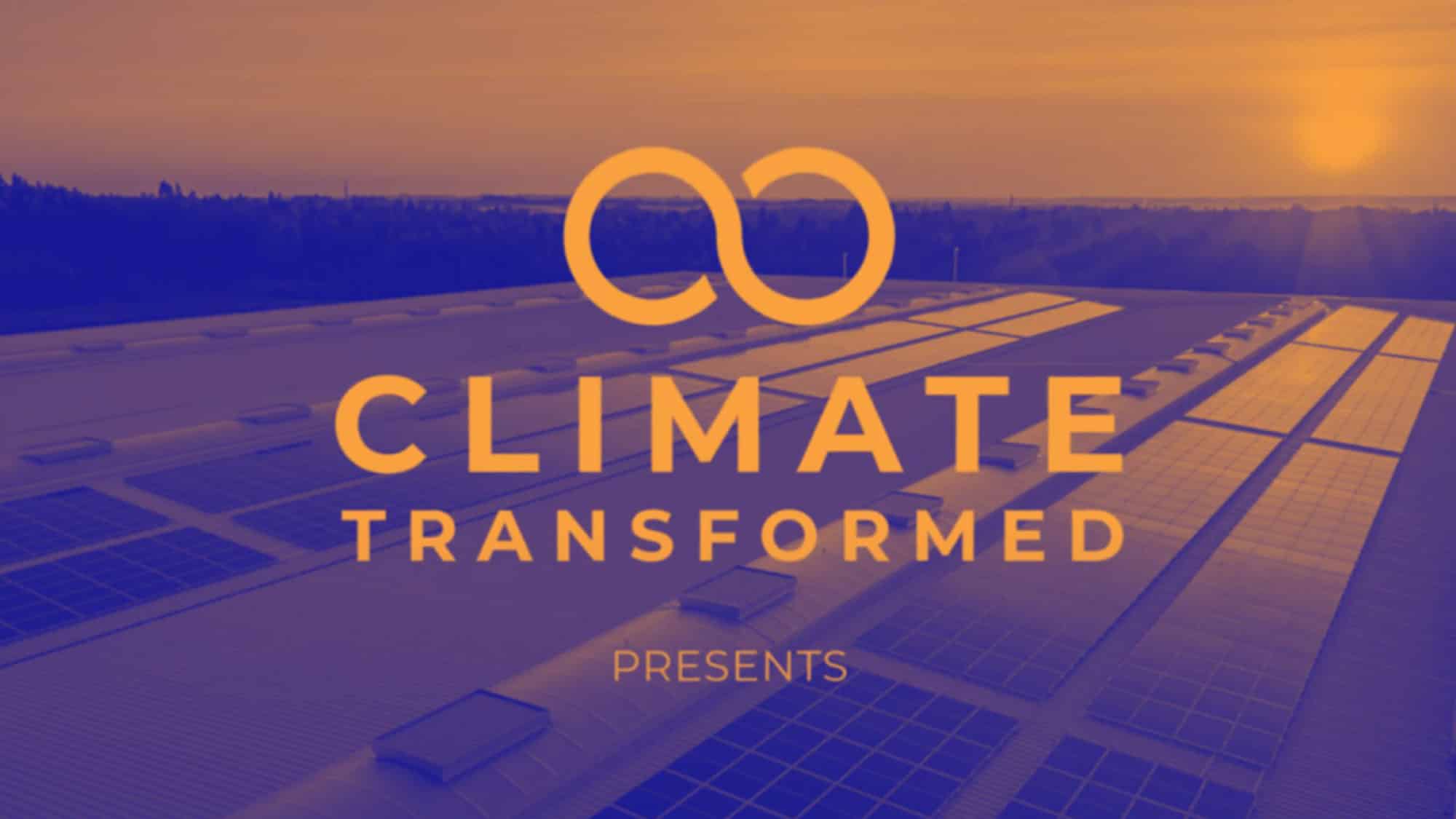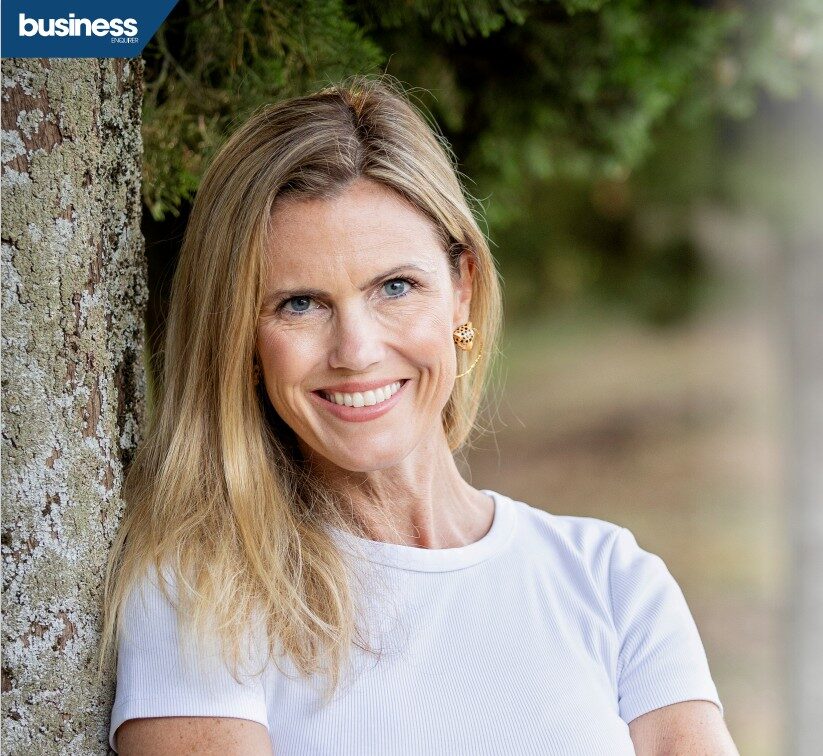ClimateTransformed interviews SCB’s Kevin McGeeney on the market’s ability to find solutions.
Rupert: The headline of an Irish Independent article in 2020 featuring you, read, ‘There isn’t a problem that can’t be solved with a market solution’. How do you feel about that quote, attributed to you in 2020, are you still confident in the market’s ability to find solutions?
Kevin: The quote has a little drama associated with it, but I still hold to it. From some of my earlier comments on your show, I do see a place for governments to put structures in place. By promoting the power of the marketplace, I’m not suggesting unfettered anarchic markets. I’m talking about well-controlled managed markets.
Rupert: Where are the areas for growth and development and where do we need to be targeting that investment?
Kevin: I would say, the marketplace for battery materials is key. The marketplace for sustainable air fuel is key. Within the VCM, to enable more SMEs to come into that place, more transparency – which will come – is good. More promotion of the benefits of carbon neutrality will come, which is good. I would highlight those three marketplaces.
Rupert: How much of a key role does the government need to play versus the corporate sector?
Kevin: In all significant change there is going to be a role for government. There are leaders and laggers, but the laggers will often not come along until there is a stick and not just a carrot. The original goals of setting up a renewable road transport fuel were part energy security, part environment, part agricultural jobs, farming jobs. Had it not been for the government regulations, that wouldn’t have happened. Government regulations provided certainty over an investment horizon. And that was critical. Without the government structures in place to promote those activities, there likely wouldn’t have been renewable road transport development.
Take aviation now, there are supports for sustainable air fuel, but there isn’t enough of a support for enough new private sector investors to put capital in place to develop facilities for sustainable air fuel. Aviation is a very tricky market, because, of course, planes can reroute, they can be refueling in different places. There are many countries in Europe where the hub could move. One country’s legislation needs to be matched with neighbors’ legislation. In the United States different States have different rules. Aviation is a special case, and for it to develop, a more unified government structure for that market will be needed.
Rupert: I’ve spent some time looking through different sustainability reports and you get a very clear sense very early on how committed that party is to the project, whether it’s just nice words to keep the investors happy, or if it is something they commit to it becomes pretty transparent pretty early on as to where their level of commitment is. And I’ve looked at your sustainability report earlier and I’m glad to see you’ve got numerous different levels, you’re a BCorp you’ve got some clear guidelines and targets on diversity and inclusion and you’re carbon neutral through offsetting since last year, right? Practicing what you preach.
Kevin: Yes. You mentioned that we’re a BCorp, that was a tremendous exercise to go through it pulled a lot of people in the company together to document what we do, how we behave and our values and feel proud of how we do what we do.
Rupert: Congratulations on that, I know that’s no easy task, becoming that (BCorp) and I know you probably have a whole team filling in the various requirements for that, it’s a valuable exercise. In terms of the business structure, you’ve got various different products that you broke and there’s a wide range. Where is the most interest, in evolution, where’s the most liquid markets, where you drive your liquidity from?
Kevin: For 2022 the largest part of our business will be the activities in the voluntary carbon market (VCM). In part that’s the pace of their growth, but it’s also the tragedy currently unfolding in Ukraine has meant a very risk-off approach in mainstream commodity markets. In part the tremendous volatility increases the value-at-risk calculations, increases margin calculations, and so it’s natural for traders in the market to want to reduce their position size. Which, as an arrangement firm, we get paid on volume, as a firm we don’t really take any skin in the game on level. We just want to have as big a volume as possible. So that reduces the size of the commodity markets with such high volatility. So in part we’ve seen the voluntary market rising in volume and the traditional commodity markets, since the start of the Ukraine war retrenching somewhat.
Rupert: Voluntary Carbon Markets are a newer somewhat product.
Kevin: For us, biofuels have been there since the very beginning, and we added other things along the way. The biofuels kept growing and I’m very proud that they have done so. We added agricultural markets, battery markets, methanol, green methanol markets, it’s all layered on top.
Rupert: If we don’t call VCM as a commodity, in terms of commodity markets, biofuels would still be your largest market?
Kevin: Yes that’s correct.
Rupert: But where, if there’s still a role for oil and gas, where does coal sit within that discussion?
Kevin: There’s certainly a role for oil and gas and let’s be practical about it, there’s a role for coal in the short term as well. To say that there isn’t is just plain-faced wrong. Take Europe, the fragility of the European energy system has been exposed. In the short term we’ll have to do whatever is necessary to make sure the lights stay on. And at the same time double-down on our commitments to renewable energy and green hydrogen and battery storage, so that we don’t find ourselves perpetually in the same problem. A mistake has been made, we’ve found out the mistake, and I hope we make the deep investments necessary in the energy transition so that it’s eliminated.
Rupert: This point of weakness could be used as a pivot point of strength, in essence. We’ve seen the fragility of our system and rather than be a continuation of fossil fuels, it highlights the attraction of energy independence that renewables offer. I share your optimism but equally it does concern me that every reason for optimism does seem like an opportunity for kicking the can further down the road. I wish there were more CEOs like you who practice what they preach.
You’re part of the business that adopted the Net Zero goals for your company, you’ll be around to oversee that. In other companies, and governments, you feel they set the targets for 2050 in the knowledge that they won’t be in power or won’t be on the board by then. Where do you see this going, do you think that we need clear evidence of that?
Kevin: Absolutely. I think that, for public companies, shareholder activism is what’s going to help achieve that. To say, we have a 2050 goal, what’s the path? And break the path into observable and measurable chunks. To achieve an aspiration it needs to be measurable otherwise how do I know we’ve done it? It can’t be a subjective aspiration it needs to be a specific target and then we can show that it’s being achieved.
That is the path that’s being encouraged across the board. And it is most welcome.
Rupert: Thank you Kevin I appreciate how open and honest you’ve been in your answers to all the questions fielded at you today. What was the reception in 2006 when you introduced low carbon brokerage?
Kevin: We were very much the tail on the dog. Very niche markets, relatively tight customer base, but it then started to grow. Across Europe the adoption of low carbon transport fuel picked up and spread as the legislation developed more solidity. And then anyone who was involved in the fuel market eventually just had to be involved in renewable fuel. Some folk reluctantly, some folk with zeal, and we had to assist everybody at their pace.
Rupert: What’s the current legislation? We’ve had a change at the pump we’re at E10
Kevin: up to 10 percent Ethanol. As there is a push for greater renewables, the car companies need to be onboard for that and they need to be able to certify that the cars will still work on the change in the fuel. That has gone very well, across the world. In the United States, E15 is now the grade and that may continue all year round.
With the recent crisis in Ukraine, there is a push on agricultural prices which is straining the marketplace. There may be some reductions in the use of crop-based renewables across Europe and maybe other jurisdictions as well to help out on the agricultural prices. But the product is now ubiquitous.
Rupert: We have a finite amount of land. Millions of people who don’t have enough food to eat, who live in poverty. What’s your view of land-use for a product that goes into fuel creation rather than a pure food product?
Kevin: A great and important question. If one is concerned about food security and malnutrition, and we all should be, you should want the greatest amount of agricultural produce possible. You should want the most agricultural products grown in the most diverse geographies as is possible. That will make us more secure for food scarcity.
If you’re concerned about climate change, where crops that typically would grow in a region, with a particular yield, may not grow at all or at a lower yield, again you should want the most food-crop grown, in as many places as possible. You would need an infrastructure to utilize the food crops when they’re not going into the food chain. You can’t just expect the private sector to grow things they’re not going to be able to sell. Or to grow things to then sell them below marginal cost. There has to be an outlet, a reason for the growth. You can’t store food in the same way you can have strategic reserves of crude oil.
If you’re concerned about malnutrition, food scarcity, climate change, you want there to be as big an agricultural business as possible, and where can it go? It can go into biofuels. Putting the excess into biofuels across the world – not only will you increase the amount of food crops grown, you’ll develop all of the necessary logistics to move those food crops around the world.
Rupert: Is the ethanol that we source around the world evenly spread, or are there some leading players and is Ukraine one of them?
Kevin: Commodity markets are all interlinked and if you alter one aspect, it has ripple effects across the globe. In the United States, corn ethanol, domestically produced, you might think that’s a tied-up market, but the price of corn has gone up significantly, because of the ripple effect, causing problems.
Rupert: What’s happened on the nickel markets at the start of this year, with the price rising up to 25,000 and the subsequent action to pause, then cancel the trading activity?
Kevin: I don’t think that the market place for battery materials is sufficiently developed yet. And certainly not developed to the extent that is required if you look at the electric vehicle (EV) aspirations of car companies and politicians around the world. It’s not just, “Do we have enough of the elements, is there a lithium supply is there a cobalt supply, is there a nickel supply?”. It’s “Do we have the market mechanisms in place to sufficiently transact and hedge?”.
The answer is, “No”. The cobalt market, the lithium market they are not a sufficient number of players, liquidity providers in those marketplaces to justify the expectations of society on EV growth. The number of people transacting, trading, offering liquidity in those markets has got to increase, or what happened with nickel is just going to keep happening.
Rupert: That was driven by a short position held by the big Chinese trader. What you’re saying is that he was able to have impact on the market positively or negatively because of the relatively few number of players.
Kevin: For crucial markets, whether they be agriculture, energy or metals, you want as many people as possible to come, provide liquidity, transact, hedge, even to take speculative positions. So the impact of any one player’s activities is spread out and is not going to create an adverse move in the markets.



